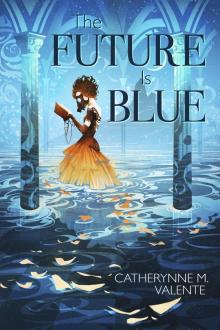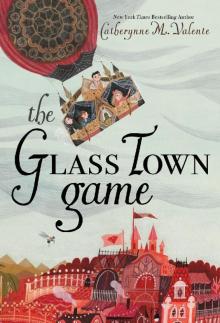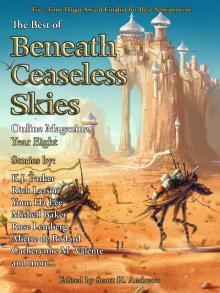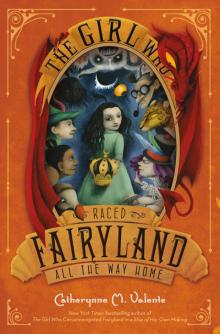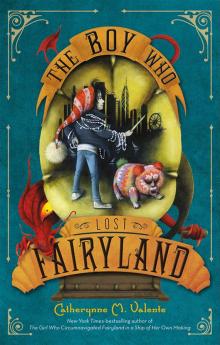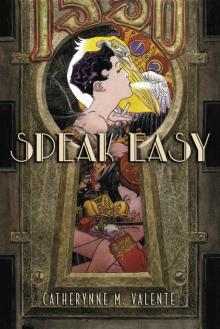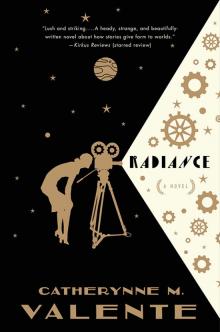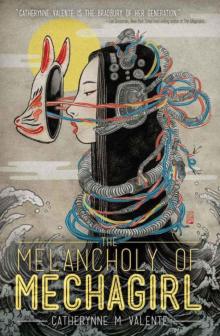


You Are Here, Page 29
Colin Ellard
4. The experiment conducted on Inuit and Tenne was published as J. W. Berry, “Tenne and Eskimo Perceptual Skills,” International Journal of Psychology 1 (1996), 207-229.
5. A discussion of spatial modifiers in Inuktitut can be found in Judith Klein-feld’s paper “Visual Memory in Village Eskimo and Urban Caucasian Children,” Arctic 24, no. 2 (1971), 132-138. The example sentence comes from R. Gagne’s paper “Spatial Concepts in the Eskimo Language,” in Eskimo of the Canadian Arctic, edited by V. F. Valentine and F. G. Valee (McClelland and Stewart: Toronto, 1971).
6. Cora Angier Sowa has written a fascinating account of the World Trade Center as a “mythic place” in which she tries to account for the human reaction to its loss. Her essay is available at www.minervaclassics.com/wtcholy.htm.
7. Direct comparisons of the use of landmark configuration in animals and humans have been carried out in a series of experiments spearheaded by Marcia Spetch at the University of Alberta. One good source is a paper written by Spetch et al., “Use of Landmark Configuration in Pigeons and Humans: II. Generality across Search Tasks,” Journal of Comparative Psychology 111, no. 1 (1997), 14-24.
8. Gladwin wrote of his extensive experiences among the Puluwat and what he learned about their means of navigation in a wonderfully accessible book entitled East Is a Big Bird: Navigation and Logic on Puluwat Atoll (Harvard University Press: Boston, 1970).
9. David Lewis, We, the Navigators: The Ancient Art of Landfinding in the Pacific (University of Hawaii Press: Honolulu, 1972), 90.
10. The studies of spatial memory in Australian Aboriginal children were carried out by Judith Kearins of the University of Western Australia and published in the report “Visual Spatial Memory in Australian Aboriginal Children of Desert Regions,” Cognitive Psychology 13, no. 3 (1981), 434-460.
11. Chatwin’s book The Songlines (Penguin: New York, 1988) is worth reading as both a narrative description of the Australian Aboriginal’s connection to the land and also as an extended meditation on the relationship between human beings and the natural world.
CHAPTER 3: LOOKING FOR ROUTES
1. The description of Edward Atkinson’s struggle can be found on page 303 of Apsley Cherry-Garrard’s extraordinary memoir of the Scott expedition, The Worst Journey in the World (Chatto & Windus: London, 1965). The book contains a wealth of details describing the influence of the stark and featureless terrain of the Antarctic on human sensory perception.
2. The study of lost-person behavior in Peter Lougheed Park was conducted by David Heth of the University of Alberta and described in the paper “Characteristics of Travel by Persons Lost in Albertan Wilderness Areas,” Journal of Environmental Psychology 18 (1998), 223-235.
3. Ronald Schmidt and Dwight McCarter, Lost! A Ranger’s Journal of Search and Rescue (Graphicom: Yellow Springs, OH, 1988).
4. Many of Wehner’s classic studies are described in his paper with Martin Muller entitled “Path Integration in Desert Ants, Cataglyphis fortis,” Proceedings of the National Academy of Sciences 85, no. 4 (1988), 5287-5290.
5. The studies showing that ants with backpacks still estimate distance accurately are described in a chapter called “Arthropods” written by Wehner for the book Animal Homing, edited by F. Papi (Chapman and Hall: London, 1992), 45-144. The role of optic flow in ant navigation is described in a paper by B. Ronacher and R. Wehner entitled “Desert Ants Cataglyphis fortis Use Self-induced Optic Flow to Measure Distances Travelled,” Journal of Comparative Physiology A 177 (1995), 21-27.
6. Wehner’s leg extension and amputation experiments are described in the paper by M. Wittlinger, R. Wehner, and H. Wolf entitled “The Ant Odometer: Stepping on Stilts and Stumps,” Science 312, no. 5782 (2006), 1965-1967. The finding that ants can incorporate changing altitudes in their homing vectors can be found in G. Grah, R. Wehner, and B. Ronacher, “Path Integration in a Three-dimensional Maze: Ground Distance Estimation Keeps Desert Ants Cataglyphis fortis on Course,” Journal of Experimental Biology 208 (2005), 4005-4011.
7. The classic demonstration of path integration in nursing mother gerbils is described in M. L. Mittelstaedt and H. Mittelstaedt’s “Homing by Path Integration in a Mammal,” Naturwissenschaften 67, no. 11 (1980), 566-567.
8. Path integration experiments in a variety of animals are described in the chapter by A. S. Etienne et al., “The Role of Dead Reckoning in Navigation,” in Spatial Representation in Animals, edited by Susan Healy (Oxford University Press: Oxford, 1998), pp. 54-68.
9. A nice online biography of Robert Goddard can be found at www-istp.gsfc.nasa.gov/stargaze/Sgoddard.htm.
10. Experiments showing that visual fixes reset integration drift are described in A. S. Etienne, R. Maurer, and V. Seguinot’s paper “Path Integration in Mammals and Its Interaction with Visual Landmarks,” Journal of Experimental Biology 199, no. 1 (1996), 201-209. and in A. S. Etienne et al., “A Brief View of Known Landmarks Reorientates Path Integration in Hamsters,” Naturwissenschaften 87, no. 11 (2000), 494-498.
11. Ursula von St. Paul’s studies of visual path integration in geese were originally reported in her “Do Geese Use Path Integration for Walking Home?” in Avian Navigation, edited by F. Papi and H. G. Wallraff (Springer: Berlin, 1982), 298-307.
12. The original blindwalking studies were conducted and described by J. Thomson in “Is Continuous Visual Monitoring Necessary in Visually Guided Locomotion?” Journal of Experimental Psychology: Human Perception and Performance 9 (1983), 427-443. Our own first foray into human path integration is described in M. G. Bigel and C. G. Ellard, “The Contribution of Nonvisual Information to Simple Place Navigation and Distance Estimation: An Examination of Path Integration,” Canadian Journal of Psychology 54, no. 3 (2000), 172-185.
13. Experiments assessing humans’ path-integration abilities can be found in J. M. Loomis et al., “Nonvisual Navigation by Blind and Sighted: Assessment of Path Integration Ability,” Journal of Experimental Psychology: General 122 (1993), 73-91.
CHAPTER 4: MAPS IN THE WORLD
1. Readers looking for a more detailed treatment of some of the concepts of topology could do no better than to look up Jeffrey Weeks’s The Shape of Space (CRC Press: Boca Raton, 2001). It is a very entertaining math book (I’m not kidding!) that takes the reader from basic concepts in topology to discussions of experiments and observations that may reveal the shape of the universe.
2. The ancient history of pigeons is described in J. Hermans, The Handbook of Pigeon Racing (Pelham Books: London, 1986).
3. An excellent review of navigation in bird including pigeons, can be found in the online book Animal Spatial Cognition: Comparative, Neural and Computational Approaches, edited by Michael Brown and Robert Cook and presented by the Society for Comparative Cognition (www.pigeon.psy.tufts.edu/asc/toc.htm). The chapter by Verner Bingman entitled “Behavioral and Neural Mechanisms of Homing and Migration in Birds” (www.pigeon.psy.tufts.edu/asc/Bingman/Default.htm) provides a good overview. The chapter by John Phillips, Klaus Schmidt-Koenig, and Rachel Muheim entitled “True Navigation: Sensory Bases of Gradient Maps” (www.pigeon.psy.tufts.edu/asc/Phillips/Default.htm) provides a thorough explanation of gradient map concepts.
4. The study of pigeon homing at the Auckland Junction Magnetic Anomaly can be found in T. E. Dennis, M. J. Rayner, and M. M. Walker, “Evidence That Pigeons Orient to Geomagnetic Intensity during Homing,” Proceedings of the Royal Society B 274, no. 1614 (2007), 1153-1158.
5. Hans Wallraff reviews his odor theory of pigeon navigation in a paper entitled “Avian Olfactory Navigation: Its Empirical Foundation and Conceptual State,” Animal Behaviour 67, no. 2 (2004), 189-204.
6. Carl Cornelius’s sea turtle story was originally recorded in his work Die Zug-und Wander-Thiere aller Thierclassen (Springer: Berlin, 1865) but came to me secondhand in the paper by L. Avens and K. Lohmann entitled “Navigation and Seasonal Migratory Orientation in Juvenile Sea Turtles,” Journal of Experimental Biology 207 (2004), 1771-1778.
7. Som
e aspects of turtle navigation are described in papers such as K. Lohmann et al., “Animal Behaviour: Geomagnetic Map Used in Sea-turtle Navigation,” Nature 428, no. 6986 (2004), 909-910, and K. Lohmann and C. Lohmann, “Orientation and Open-Sea Navigation in Sea Turtles,” Journal of Experimental Biology 199, part 1 (1996), 73-81.
8. Robin Baker’s studies of human magnetic sense are described in his book Human Navigation and the Sixth Sense (Simon and Schuster: New York, 1981).
9. The finding of magnetic bones in the human head was reported by R. Baker, J. G. Mather, and J. H. Kennaugh in a paper entitled “Magnetic Bones in Human Sinuses,” Nature, 301 (1983), 78-80.
10. Finney describes his work with Nainoa Thompson and the Polynesian Voyaging Society in Voyage of Rediscovery: A Cultural Odyssey through Polynesia (University of California Press: Berkeley, 1994). Finney speculates that Thompson may at times have been guided by magnetoreception in his paper “A Role for Magnetoreception in Human Navigation?” Current Anthropology 36 (1995), 500-506.
11. David Lewis’s story of scrotal navigation is related in his book We, the Navigators: The Ancient Art of Landfinding in the Pacific (University Press of Hawaii: Honolulu, 1972), 86-92.
12. Descriptions of Bedouin tracking methods are found in Donald P. Cole, Nomads of the Nomads: The Al Murrah Bedouin of the Empty Quarter (Aldine Publishing: Chicago, 1975).
13. Wilfred Thesiger, Arabian Sands (Dutton: New York, 1959), 51-52.
CHAPTER 5: MAPS IN MOUSE MINDS
1. The best biography of Edward Chace Tolman is found in volume 1 of Portraits of Pioneers in Psychology, edited by G. A. Kimble, M. Wertheimer and C. L. White (APA Press: Washington, DC, 1991) in a chapter by Henry Gleit-man entitled “Edward Chace Tolman: A Life of Scientific and Social Purpose,” 227-241.
2. Tolman’s classic starburst maze experiments are described in his paper “Cognitive Maps in Rats and Men,” Psychological Review 55 (1948), 189-208.
3. The story of von Frisch’s marvelous early experiments with bees is told by him in the wonderful little book Bees: Their Vision, Chemical Senses, and Language (Cornell University Press: Ithaca, NY, 1972).
4. A brief discussion of Aristotle’s observations of bees is given by the biologist J. B. S. Haldane in “Aristotle’s Account of Bees’ ‘Dances,’” The Journal of Hellenic Studies 75 (1955), 24-25.
5. A nice illustrated account of Michelsen’s robot bee studies is given in the article by J. Knight entitled “Animal Behaviour: When Robots Go Wild,” Nature 434, no. 7036 (2005), 954-955.
6. J. L. Gould, “Honey Bee Cognition,” Cognition 37 (1990), 83-103.
7. The paper by R. Menzel et al. entitled “The Knowledge Base of Bee Navigation,” Journal of Experimental Biology 199, no. 1 (1996), 141-146, gives a good overview of some recent thinking about bee maps.
8. It took a large team to demonstrate, using sophisticated radar tracking methods, that bees might, after all, have a “map-like” spatial memory. See R. Menzel et al., “Honey Bees Navigate According to a Map-like Spatial Memory,” Proceedings of the National Academy of Sciences 102, no. 8, (2005), 3040-3045.
9. David Sherry has written a nice, accessible review of food caching in birds: “Food Storing in the Paridae,” Wilson Bulletin 101, no. 2 (1989), 289-304.
10. The studies on spatial mapping in Clark’s nutcrackers were conducted by Brett Gibson and Alan Kamil and described in “Tests for Cognitive Mapping in Clark’s Nutcrackers (Nucifraga columbiana)” Journal of Comparative Psychology 115, no. 4 (2001), 403-417.
CHAPTER 6: MUDDLED MAPS IN HUMAN MINDS
1. Jean Piaget and Barbel Inhelder wrote the classic first book on the development of spatial concepts in children, The Child’s Conception of Space, translated by F. J. Langdon and J. L. Lunzer (Routledge and Kegan Paul: London, 1971).
2. For the history of maps, I can do no better than recommend the massive volumes of the History of Cartography Project. The material I discuss in this chapter was taken from volume 1 of Cartography in Prehistoric, Ancient, and Medieval Europe and the Mediterranean, edited by J. Brian Harley and David Woodward (University of Chicago Press: Chicago, 1987).
3. It is easy to find sensational and preposterous accounts of the origin and purpose of the Nazca lines. A more balanced treatment, which embeds the lines in their full cultural context, can be found in Helaine Silverman and Donald Proulx’s academic but quite readable book The Nasca (Wiley-Blackwell: Hoboken, NJ, 2002).
4. Barbara Tversky has contributed an enormous number of insightful articles and presentations to our understanding of human spatial cognition, among many other things. One of my favorites, which contains most of the ideas discussed here, is the chapter “Cognitive Maps, Cognitive Collages, and Spatial Mental Models,” in Spatial Information Theory: A Theoretical Basis for GIS, edited by A. U. Frank and I. Campari (Springer-Verlag: Berlin, 1995), 14-24.
5. Erik Jonsson’s book Inner Navigation: Why We Get Lost and How We Find Our Way (Scribner: New York, 2002) is a delightful general account of some aspects of human navigation. Jonsson is very much of the belief that experiments on urban university students are preventing us from understanding the true navigational capability of human beings. He even has a hunch that Robin Baker was on the right track with his magnetoreception studies and has encouraged me to continue with them. I’d almost like to do so just for the fun of watching participants stumble through forests with magnets on their heads!
6. Yi-fu Tuan’s Space and Place: The Perspective of Experience (University of Minnesota Press: Minneapolis, 2001) is a remarkable work of anthropology covering much of the relationship between the basic dimensions of space and our beliefs, feelings, thoughts, and rituals.
7. Some of the experiments dealing with accessing spatial information between nested environments can be found in the paper by F. Wang and J. Brockmole entitled “Switching between Environmental Representations in Memory,” Cognition 83 (2002), 295-316.
8. Tim McNamara reported the work on the structure of spatial memories for objects presented on a screen in a paper with J. K. Hardy and S. C. Hirtle entitled “Subjective Hierarchies in Spatial Memory,” Journal of Experimental Psychology: Learning, Memory and Cognition 15, no. 2 (1989), 211-227.
9. Jean Piaget and Barbel Inhelder, The Child’s Conception of Space, translated by F. J. Langdon and J. L. Lunzer (Routledge and Kegan Paul: London, 1971).
CHAPTER 7: HOUSE SPACE
1. Research on the effectiveness of home staging is done (not surprisingly) by realtors and home stagers. One oft-cited finding, based on a 2003 U.S. survey by the real estate brokerage company HomeGain, suggests that home staging produced an average return on investment of 169 percent, where the price range of staging in the survey ranged from about $200 to $1,000. Other anecdotal accounts suggest that staging also shortens the average time that a house is on the market.
2. Isovists in architecture were first described in a paper by M. L. Benedikt entitled “To Take Hold of Space: Isovists and Isovist Fields,” Environment and Planning B, Planning and Design 6, no. 1 (1979), 47-65.
3. Some of the studies showing that isovist shapes influence feeling and behavior are described in a report by G. Franz and J. M. Wiener entitled “Exploring Isovist-based Correlates of Spatial Behavior and Experience,” in Proceedings of the 5th International Space Syntax Symposium (2005), 503-517.
4. Jay Appleton’s arguments about the importance of prospect and refuge to the human psyche are laid out in his book The Experience of Landscape (Wiley: Hoboken, NJ, 1975).
5. Winnifred Gallagher’s House Thinking, a delightful tour through the main parts of a modern house, is filled with much interesting material on the history and philosophy of house building (Harper Perennial: New York, 2007).
6. Christopher Alexander, in A Pattern Language: Towns, Building, Constructions (Oxford University Press: Oxford, 1977), lays out an encyclopedic set of intuitive rules governing how welcoming and functional space should be organized. The theory underlying the rules i
s described in several volumes, including The Timeless Way of Building (Oxford University Press: Oxford, 1979).
7. Amos Rapoport’s seminal work on the meaning of house form, written from a cross-cultural perspective, is his book House Form and Culture (Prentice-Hall: New York, 1969).
8. It is easy to find bad information about feng shui and difficult to find useful information. Two books that I found useful were Cate Bramble’s The Architect’s Guide to Feng Shui: Exploding the Myth (Architectural Press: Oxford, 2003) and Kartar Diamond’s Feng Shui for Skeptics: Real Solutions without Superstition (Four Pillars Publishing: Los Angeles, 2003).
9. Christopher Alexander, Notes on the Synthesis of Form (Harvard University Press: Boston, 1964).
10. Alexander’s The Nature of Order (volume 1, The Phenomenon of Life; volume 2, The Process of Creating Life; volume 3, A Vision of the Living World; and volume 4, The Luminous Ground) was published in 2004 by the Center for Environmental Structure, Berkeley, California.
11. Sarah Susanka, The Not So Big House: A Blueprint for the Way We Really Live (Taunton Press: Newtown, CT, 2001).
12. Muthesius’s magnum opus, Das Englisch Haus, was originally published in 1904. An English translation by Janet Seligman and Stewart Spencer, The English House, has recently been published in a beautiful edition with all his original drawings intact (Frances Lincoln: London, 2006).
13. Muthesius, Layout and Construction, volume 2 of The English House, p. 9.
CHAPTER 8: WORKING SPACE
1. A nice summary of Propst’s Action Office concept and his attitude toward its current “Dilbert-ization” can be found in the 1998 article by Yvonne Abraham in Metropolis Magazine entitled “The Man behind the Cubicle,” www.metropolismag.com/html/content_1198/n098man.htm.
2. A discussion of visibility graphs can be found in the paper by A. Turner et al. entitled “From Isovists to Visibility Graphs: A Methodology for the Analysis of Architectural Space,” Environment and Planning B: Planning and Design 28 (2001), 103-121.

